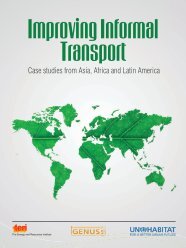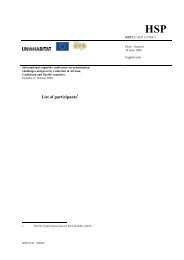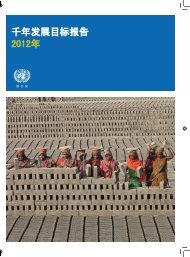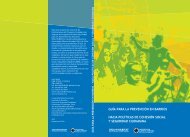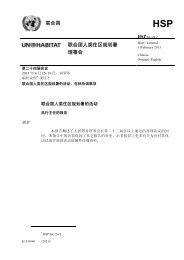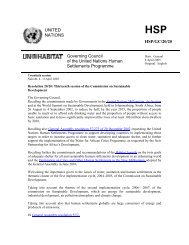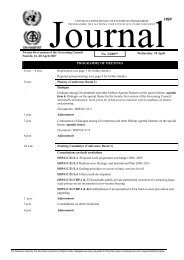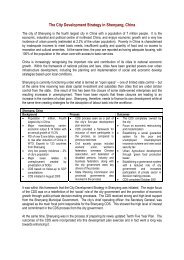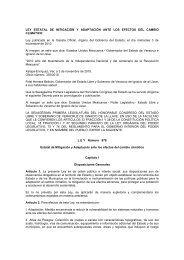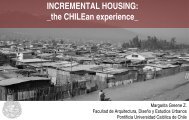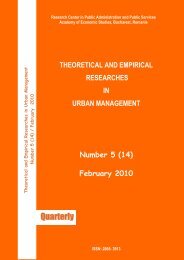EMIS - UN-Habitat
EMIS - UN-Habitat
EMIS - UN-Habitat
Create successful ePaper yourself
Turn your PDF publications into a flip-book with our unique Google optimized e-Paper software.
The Toolkit: Key Steps in Building an Environmental Management Information System<br />
Tool 22: Preparing a Sensitivity Map<br />
How to prepare environmental sensitivity maps (using air quality as<br />
an example)<br />
_____________________________________________________________<br />
Sensitivity Maps show environmental constraints which can be overcome<br />
with engineering measures (e.g. unstable slopes, air quality problems) or<br />
which relate to preservation (e.g. areas with endangered species). Sensitivity<br />
Maps are developed through an analysis of the thematic maps relevant to<br />
this issue, and through an intensive working group process.<br />
Sensitivity Maps are prepared in the same way as Suitability Maps (see Tool<br />
21: Preparing a Suitability Map).This tool, therefore, will concentrate on the<br />
generation of a sensitivity map from point sources, focusing on air pollution.<br />
For example, an industrialised city monitors the air quality situation through<br />
monitoring stations.The data from the monitoring stations are continuously<br />
collected and entered into a database system.The most common analysis<br />
method is to compare recent values of certain chemicals in the air with<br />
values from previous years.This analysis shows if a situation is improving or<br />
worsening, and can also be displayed on maps.<br />
The <strong>EMIS</strong> uses this kind of monitoring data to determine areas of<br />
pollution, i.e. to show highly polluted areas and less polluted areas in the<br />
city.The process is closely connected to the working group process.The<br />
Issue-Specific Working Group on Air Quality sets the standards, rules<br />
and regulations which will apply for the particular areas which the map<br />
describes as suitable or not suitable.Those standards, rules and regulations<br />
165




